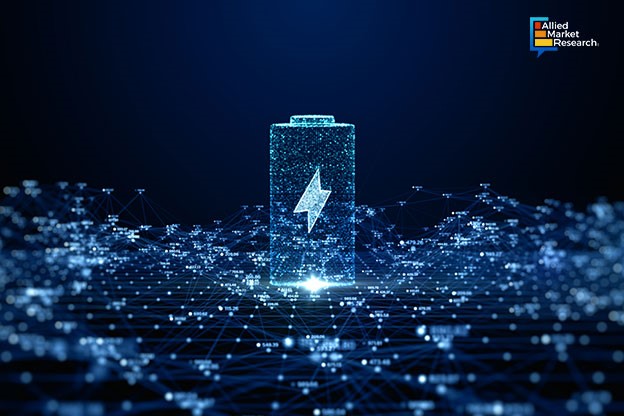Which Latest Battery Technologies Can Empower Businesses with Cost-Effective and Sustainable Energy Solutions?

5 Apr
2024
Highlights:
- Latest battery technologies reshaping industries
- Prominent region fostering advanced battery development
- Some groundbreaking innovations by leading players
- Profitable acquisitions in the domain
Over the past few years, industries and organizations have been widely adopting renewable energy sources due to emerging environmental concerns. Battery has become a sustainable and renewable source of energy that is designed to store and release electrical energy as per the requirement. Nowadays, batteries have found several applications across various industries including consumer electronics, renewable energy storage, and electric vehicles.
Advanced battery technologies that could power the future businesses
With the advancements in technology, battery manufacturers are constantly experimenting with new chemistries to offer cheaper, denser, lighter, and more powerful sources of energy. Lithium-ion batteries have emerged as a new battery technology that comprises the movement of lithium ions from positive to the negative electrode through the electrolyte. Today, among the state-of-the-art storage technologies, li-ion battery technology allows the highest level of energy density. These batteries offer numerous advantages such as very-low self-discharge, long lifetime, and cycling performances. New-generation lithium-ion batteries are expected to offer some promising applications such as efficient renewable energy storage and future transportation including marine, railways, aviation, and off-road mobility.
On the other hand, solid state batteries represent a transformative shift in battery technology. In solid-state batteries, the liquid electrolyte is replaced by a solid compound which never allows lithium ions to mitigate within it. Recently, the R&D of Saft, a leading provider of advanced technology battery solutions emphasized the development of two main solid-state material types including polymers and inorganic compounds. By using these two materials, the company aims to offer physio-chemical properties such as processability, conductivity, and stability. The best thing about solid-state batteries is their optimum level of safety. Unlike liquid electrolyte, solid-state electrolytes are non-flammable when heated. Additionally, the batteries permit the use of innovative, high-voltage and high-capacity materials, enabling denser and lighter batteries with better self-life which results in reduced self-discharge. Moreover, these batteries are expected to provide additional advantages like simplified mechanics and thermal and safety management.
Which region has shown its prominence in cutting-edge battery development?
The battery technology industry is evaluated across various regions including North America, Asia-Pacific, Europe, and LAMEA. Among all, the Asia-Pacific region is expected to grow at a faster pace and maintain its dominance during the forecast period. This is mainly because of the rapid adoption of electric vehicles across the region. Furthermore, the rise in demand for efficient energy storage solutions and the increase in the emphasis on the use of renewable energy sources by leading industries in the region have paved the way for the development of innovative battery solutions.
Breakthrough in battery tech – Some key innovations
Leading battery-manufacturing companies have been continuously developing new battery technologies to serve the growing need for sustainable energy solutions. For instance, in November 2023, Northvolt, a renowned battery manufacturing enterprise announced the launch of its sodium-ion batteries with an energy density of over 160 watt-hours per kilogram at its R&D and industrialization campus at Northvolt Labs in Västerås, Sweden. The company developed its sodium-ion battery technology with research partner Altris, intending to make next-generation energy storage solutions. According to the company, the first-generation of sodium-ion cells was designed solely for energy storage. Subsequently, the company aims to deliver higher energy density-based solutions that could be used for cost-efficient e-mobility solutions.
On the other hand, in December 2023, Panasonic Holdings Corporation, a Japanese multinational electronics company introduced new powder-powered batteries to supercharge EVs. Sila, a California-based company founded by Tesla, supplied Panasonic with a US-made silicon powder for EV batteries that could banish range anxiety, slash charge times, and even reduce reliance on China. Tesla is Panasonic’s main customer that produces around 10% of EV batteries globally. Sila’s Titan Silicon anode powder consists of micrometer-sized particles of nano-structured silicon which replaces graphite in conventional lithium-ion batteries. These new powdered-power batteries enable EVs with 500-mile nonstop trips and 10-minute recharges.
Recent alliances made by top players that businesses should look into
Several leading players in the battery technology industry have made alliances such as mergers, acquisitions, partnerships, and collaborations to stay ahead in the competitive landscape. For instance, in March 2024, Exide Technologies, a leading European lead-acid battery manufacturer announced its acquisition of BE-Power, a well-established German-based lithium battery tech firm. With this acquisition, Exide aimed to attain new heights in providing sustainable and cutting-edge energy storage solutions.
Furthermore, in February 2024, Epsilon Advanced Materials, a renowned domestic battery material manufacturer acquired LPF cathode technology center in Germany. This acquisition made Epsilon the first global company capable of providing manufacturers with cathode and anode materials for lithium-ion batteries. This acquisition would help Epsilon to deliver solutions to cater to the evolving EV battery industry.
To conclude, people are looking for portable electronic devices for their convenience which are expected to enhance the development of battery technology in the future. Furthermore, the increase in demand for sustainable and resilient energy sources is anticipated to create immense possibilities for the domain in the coming years.
To gain more insights into the battery technology industry, feel free to talk to our industry analysts today! They can also help you develop new business strategies and initiatives.

Rosy Behera
Author's Bio- Rosy Behera holds a bachelor’s degree in Electrical and Electronics Engineering and now she is a content writer by profession. She loves to portray her thoughts and ideas with a nice command of words. Grabbing an audience with her creative write-ups is one of her biggest assets so far. Apart from writing, she is a certified “Odisi” dancer and has done Gardharva in Drawing, Painting, and Arts. She always explores new things through travel and is a big foodie.
Avenue: Entire Library membership of Allied Market Research Reports at your disposal
- Avenue is an innovative subscription-based online report database.
- Avail an online access to the entire library of syndicated reports on more than 2,000 niche industries and company profiles on more than 12,000 firms across 11 domains.
- A cost-effective model tailored for entrepreneurs, investors, and students & researchers at universities.
- Request customizations, suggest new reports, and avail analyst support as per your requirements.
- Get an access to the library of reports at any time from any device and anywhere.
Related Post
-
How are Submarine Cables Transforming Global Connectivity with Enhanced User Experience?
-
Endoscopy Procedures: Transformations in Techniques and Applications
-
AI-Powered Video Analytics: How the Product Actually Works for enterprises
-
Painting Robots: Transforming Precision Coating and Creative Applications
-
Innovations in Pharmacovigilance Systems Advancing Patient Safety
-
Understanding Edge Security: Keeping Data Safe Near the Source
-
Exploring the Use and Advancements of 3D Laser Scanners in Professional Applications
-
Reinforcing Industrial Controls with Smarter Tools and Training








